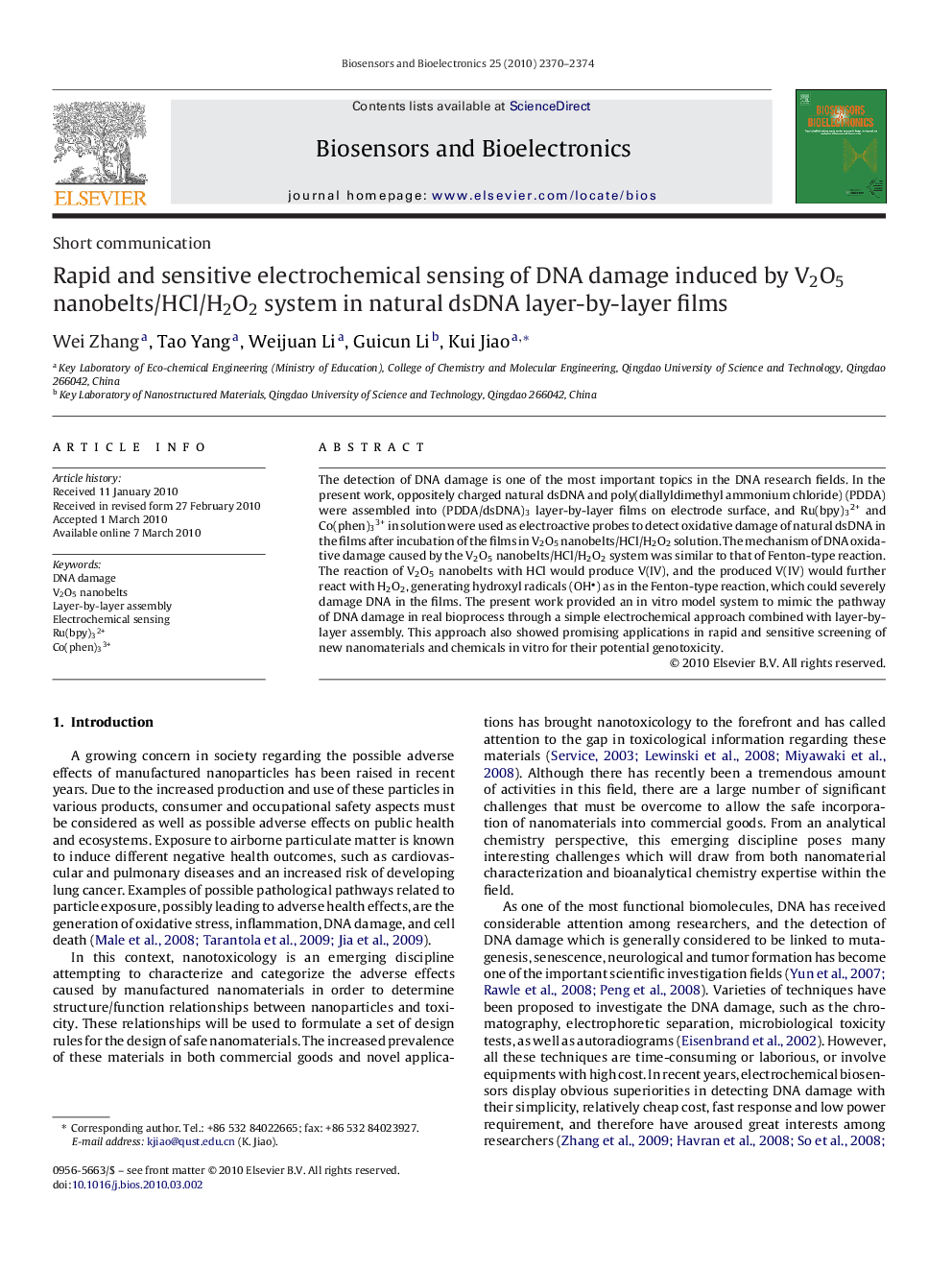| Article ID | Journal | Published Year | Pages | File Type |
|---|---|---|---|---|
| 868342 | Biosensors and Bioelectronics | 2010 | 5 Pages |
The detection of DNA damage is one of the most important topics in the DNA research fields. In the present work, oppositely charged natural dsDNA and poly(diallyldimethyl ammonium chloride) (PDDA) were assembled into (PDDA/dsDNA)3 layer-by-layer films on electrode surface, and Ru(bpy)32+ and Co(phen)33+ in solution were used as electroactive probes to detect oxidative damage of natural dsDNA in the films after incubation of the films in V2O5 nanobelts/HCl/H2O2 solution. The mechanism of DNA oxidative damage caused by the V2O5 nanobelts/HCl/H2O2 system was similar to that of Fenton-type reaction. The reaction of V2O5 nanobelts with HCl would produce V(IV), and the produced V(IV) would further react with H2O2, generating hydroxyl radicals (OH) as in the Fenton-type reaction, which could severely damage DNA in the films. The present work provided an in vitro model system to mimic the pathway of DNA damage in real bioprocess through a simple electrochemical approach combined with layer-by-layer assembly. This approach also showed promising applications in rapid and sensitive screening of new nanomaterials and chemicals in vitro for their potential genotoxicity.
